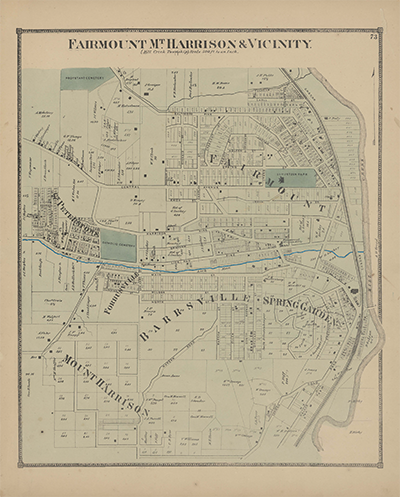Trail Location 21: A Story of Rainwater Runoff and a Community
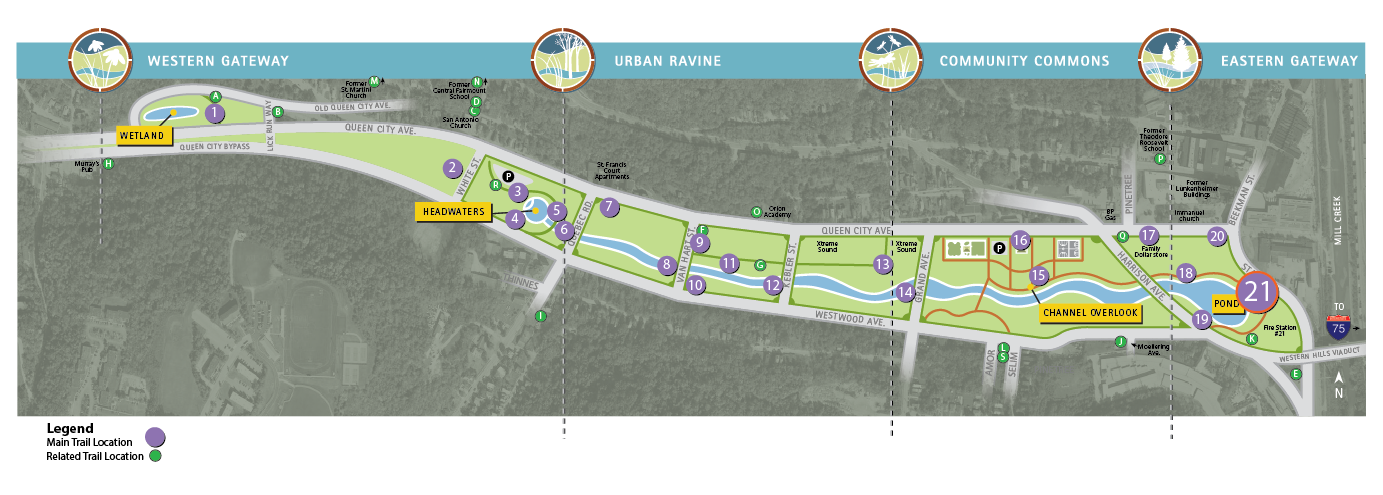
Walking Tour? VIEW THE TRAIL LOCATION IN GOOGLE MAPS >
Prior to the late 1800s, a stream called Lick Run flowed naturally through this valley to the Mill Creek, a tributary of the Ohio River. The area that drained to Lick Run — about 2,700 acres between Harrison Avenue, Ferguson Road, Glenway Avenue, and the Mill Creek — became known as the Lick Run watershed. On its way to the stream, much of the rainwater soaked into the ground or was absorbed by plants (known as pervious surfaces).
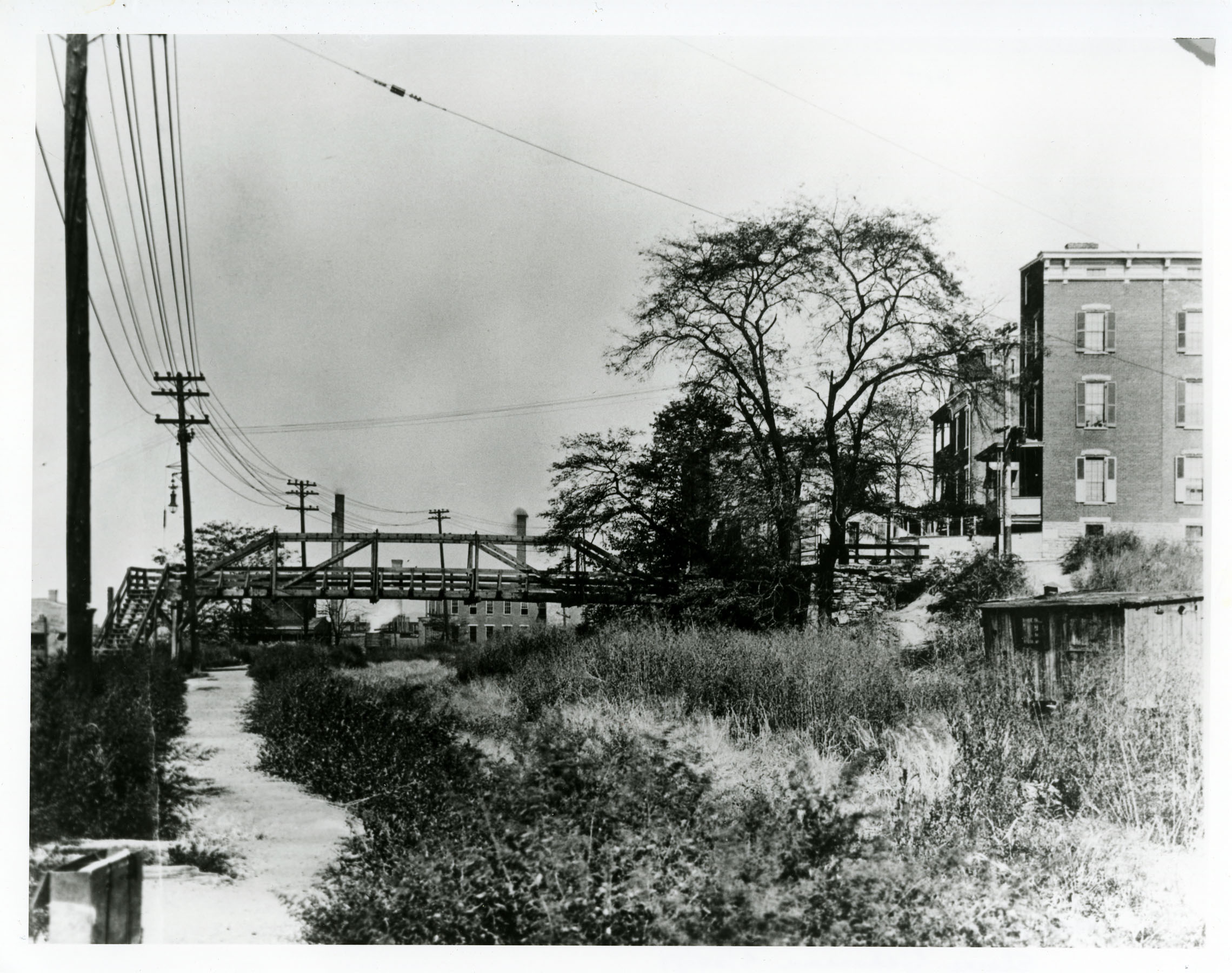
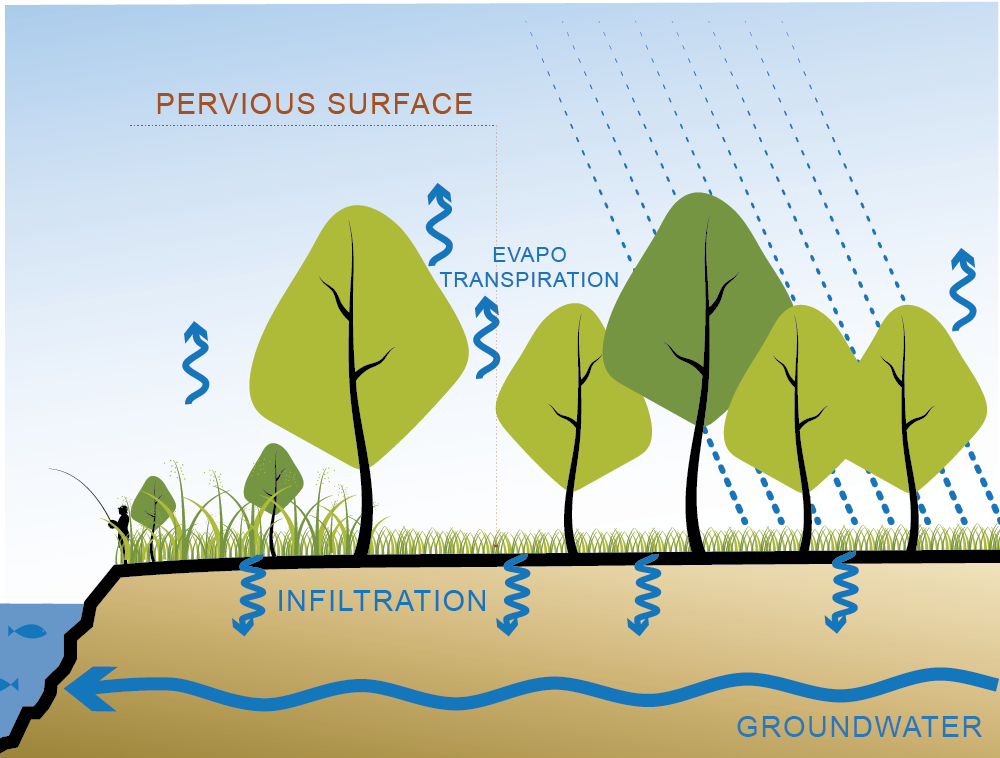
As people settled in the watershed, they replaced the pervious surfaces with impervious surfaces such as roads, sidewalks, buildings, and parking lots. This caused more rainwater to fill the stream, swelling its size. The stream also became a dumping ground for household wastes and sewage.
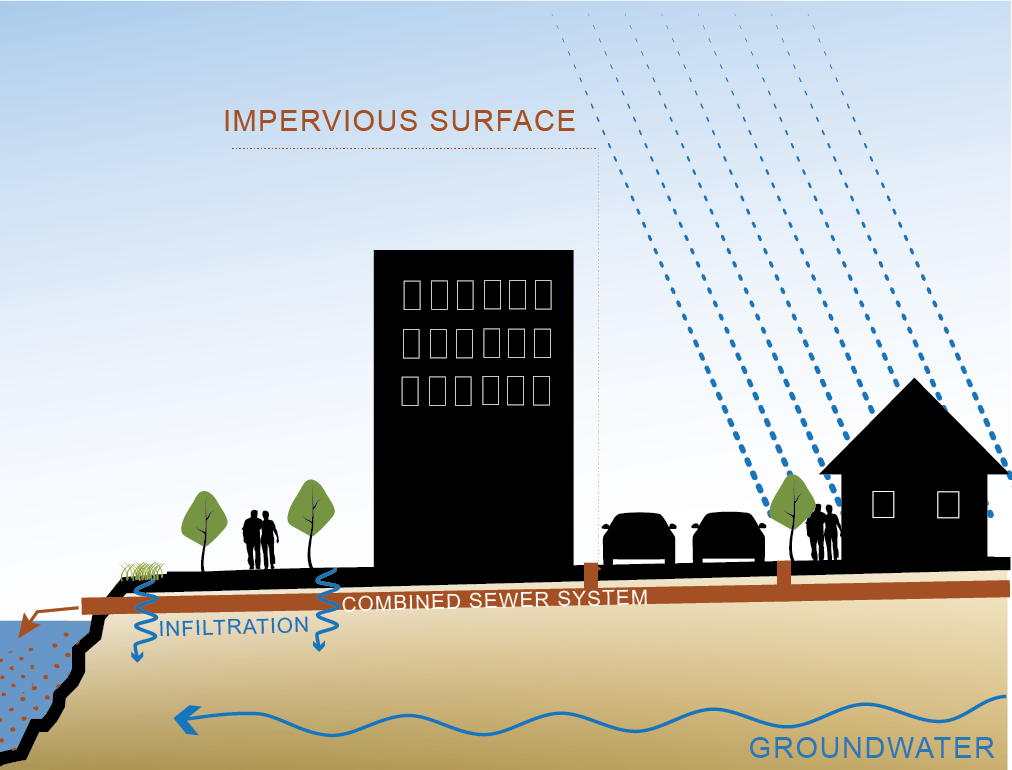
As flooding and public health became a problem, the community demanded improvements. In 1893, the Lick Run stream was enclosed and buried within a nearly 20-foot-diameter brick combined sewer. The sewer carried wastes and water out of the community and into the Mill Creek. Until the 1950s, sewage was routinely discharged into waterways like the Mill Creek, solving local problems but ultimately polluting our rivers. Our waterways didn't become cleaner until the arrival of wastewater treatment in the 1950s and 1960s and passage of the Clean Water Act in 1972.
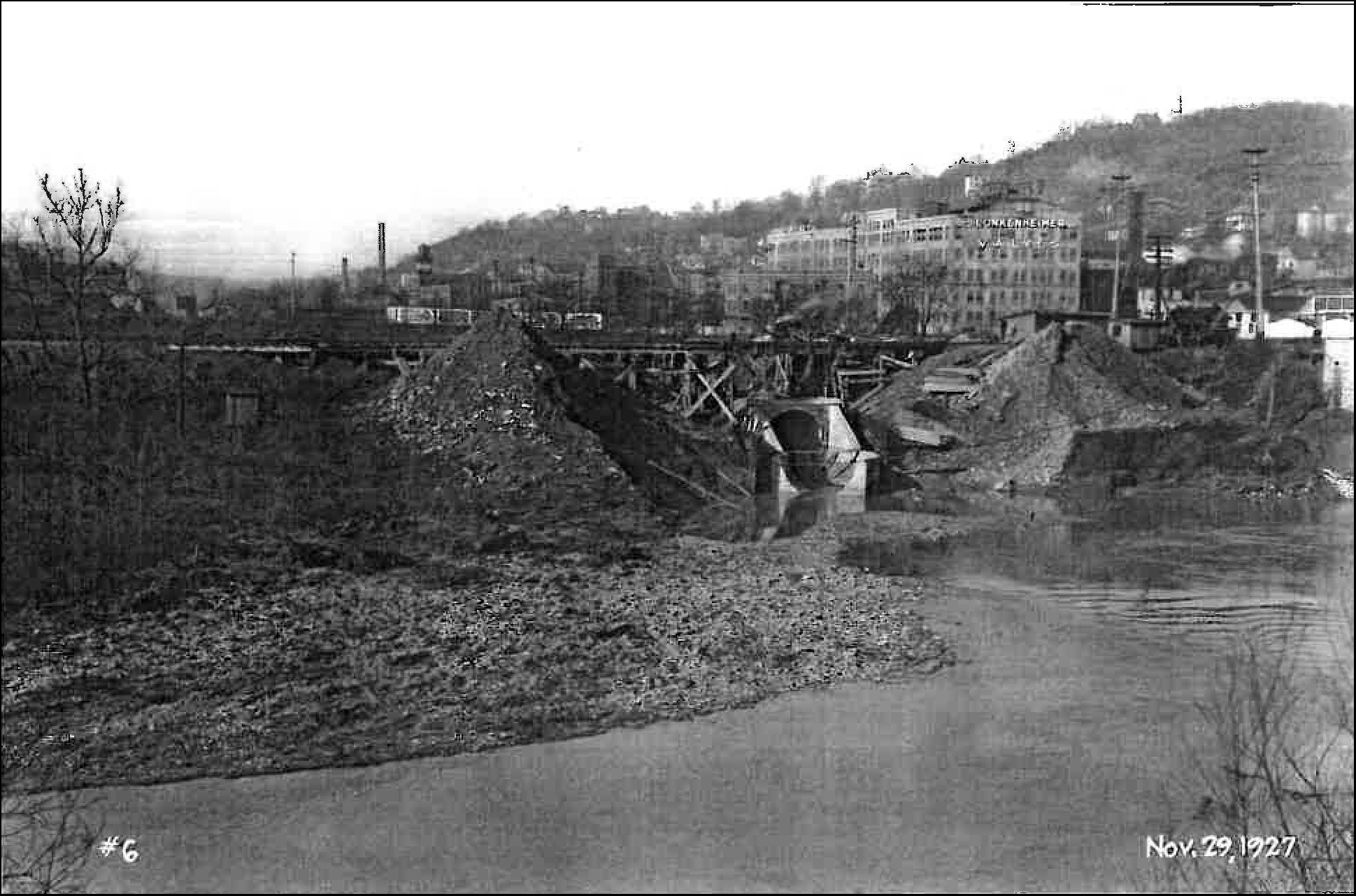
Over time, however, a new challenge arose. Combined sewers, like the Lick Run sewer, began filling up with too much water during heavy rains and overflowing into waterways. This is known as a combined sewer overflow or CSO. By the early 21st century, millions of gallons of sewage and rainwater from the Lick Run watershed were overflowing into the Mill Creek each year.
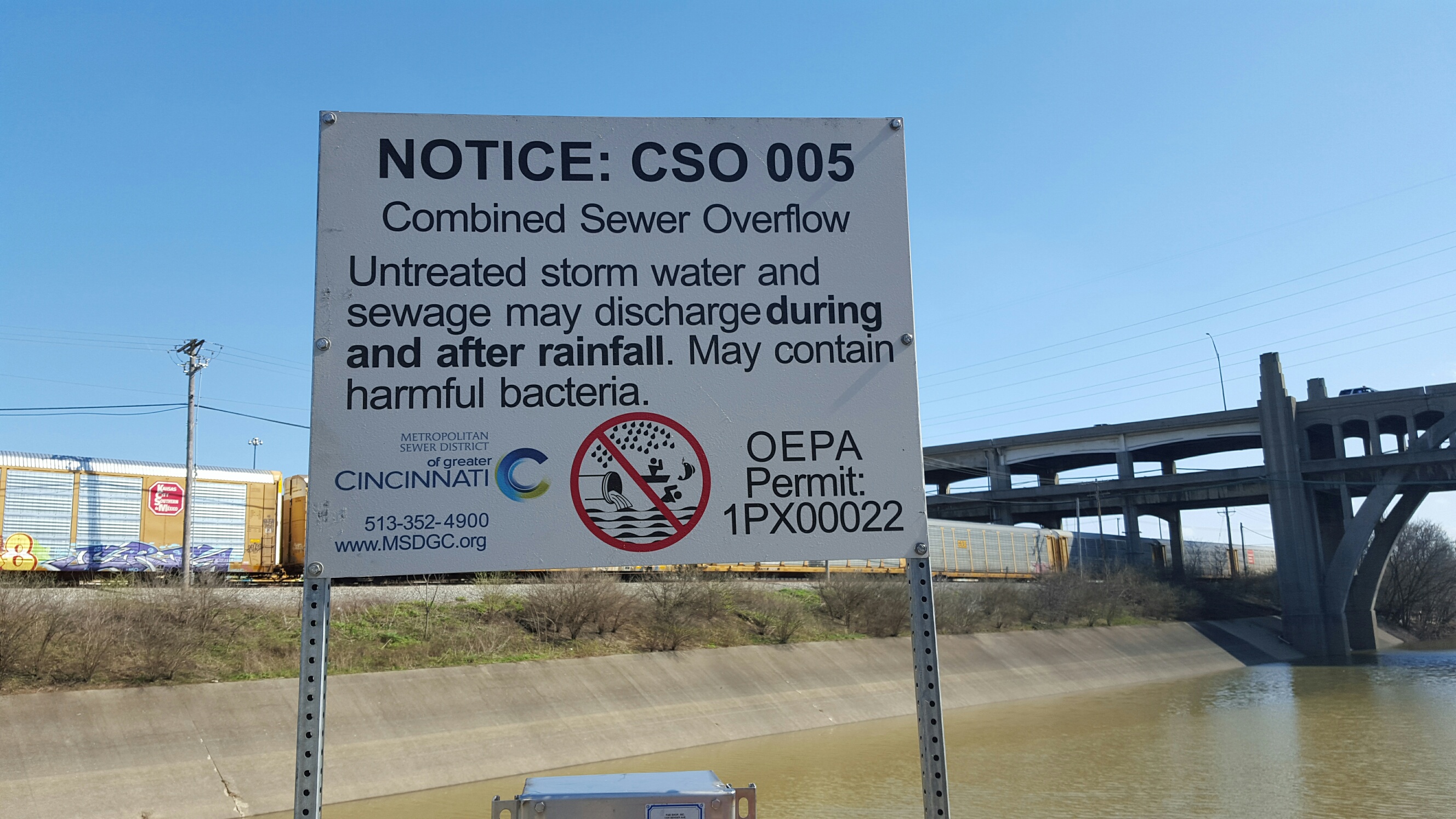
The Lick Run Greenway not only reduces the overflows but restores the historical connection between rainwater and the Mill Creek. It's our generation's Lick Run.
The Lick Run Project removes about half a billion gallons a year of rainwater (aka stormwater) from the combined sewer system and carries or conveys it to the Mill Creek through the Lick Run Greenway (just like the original Lick Run stream used to do). The rainwater is collected by a combination of green infrastructure (e.g., bioswale and stream restorations) and dedicated underground storm sewers beneath most of the main streets in South Fairmount and the surrounding area.
Keeping stormwater out of the combined sewer system results in a significant reduction in CSOs into the Mill Creek each year and also reduces the amount of wastewater treated at the Mill Creek treatment plant.
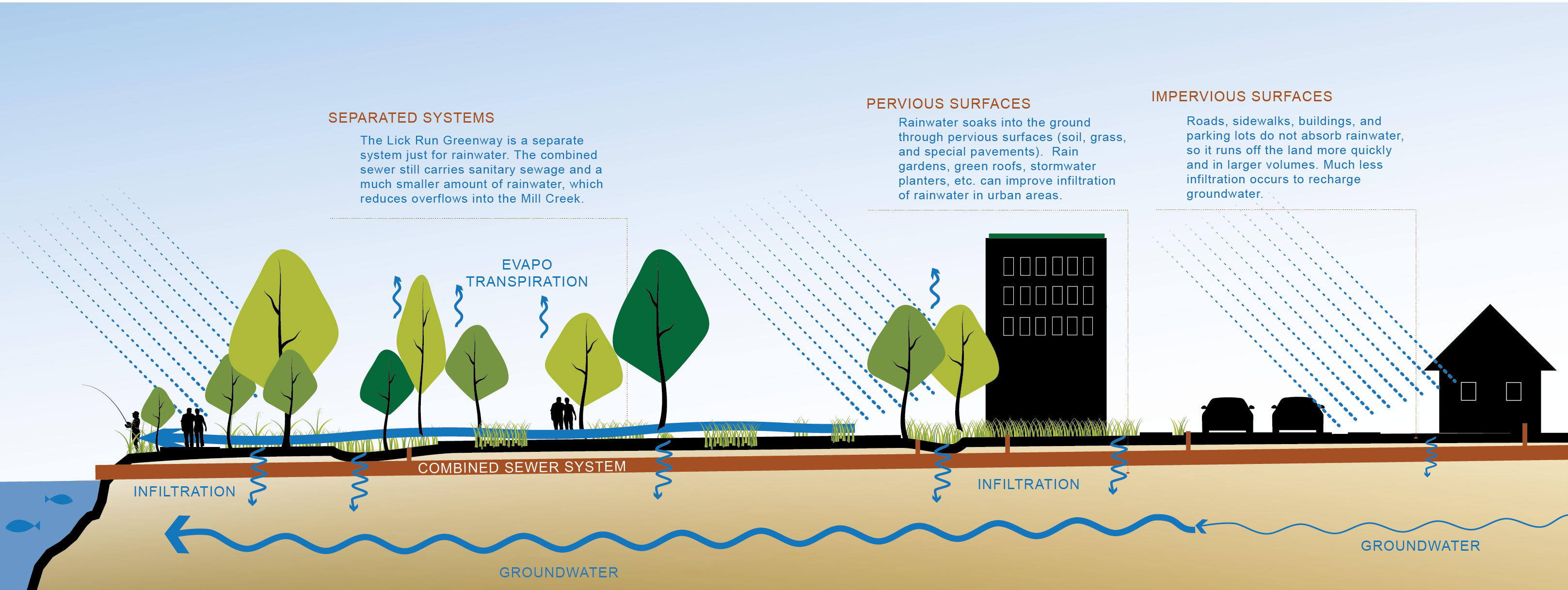

In the late 1800s, Lick Run was not very popular. The community considered it a nuisance due to flooding, dumping, and generally being a "breeding place for germs of sickness." A solution was sought, and with the help of a local committee and Congressman John A. Caldwell, the Ohio Legislature appropriated $350,000 to enclose the creek in a sewer.
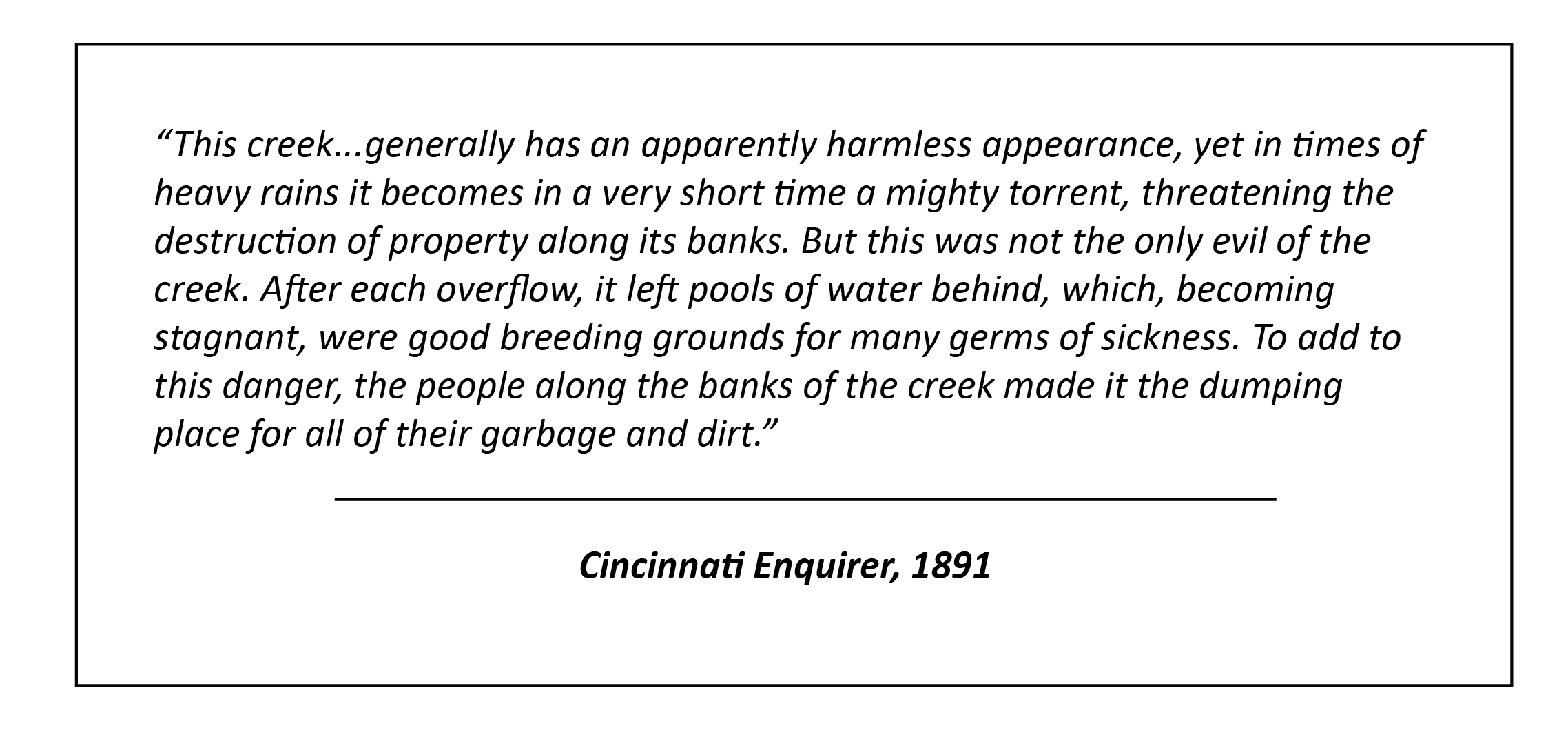
The Lick Run sewer, which was completed in three phases, extends from "the western corporation line" to the Mill Creek, a distance of nearly two miles. The central portion, from Harrison Avenue to Quebec, was completed in 1890. The upper portion, from the corporation line to Quebec Road, was completed in 1891. Much of this section had to be excavated using dynamite and some of the sewer was built under existing buildings. The lower portion, from Harrison to the Mill Creek, was completed in 1893. Although it was the shortest section, this phase took the longest due to swampy soil conditions. To protect the excavation, pilings had to be driven 32 feet into the ground.
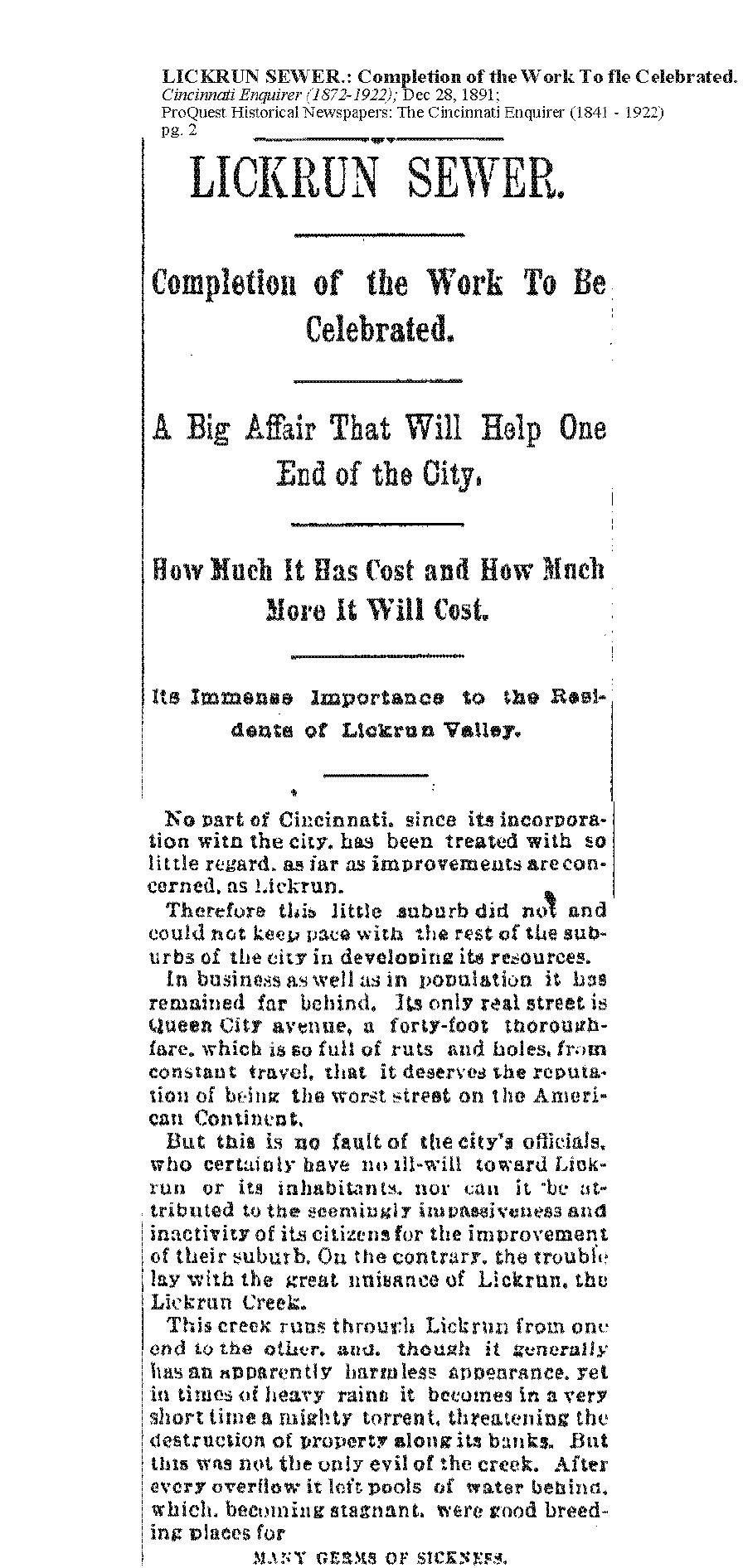
The brick walls of the Lick Run sewer are about 22 inches in thickness, and the sewer is supported on either side by "bunch" walls that are 16 feet thick and made of building stone. The sewer ranges in diameter from 19.5 feet at the Mill Creek to 9 feet at the corporation line (east of Ferguson Avenue under Queen City Avenue).
At that time, the Lick Run sewer was called "one of the largest sewers in point of diameter in the country" and "undoubtably one of the greatest works of its kind in the United States."
